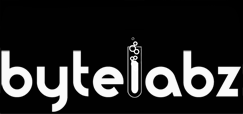Unleashing the Power of Website Design: A Journey through Creativity and Functionality
In the age of technology, a company’s website frequently serves as the initial point of contact with clients. It functions as a digital shop, displaying goods, services, and brand recognition. With so much riding on a website’s success, it is crucial to understand the fundamentals of effective website design. Your website serves as your virtual storefront, offering a glimpse into your offerings, values, and overall brand identity. Therefore, it is imperative to understand the art and science behind website design and development.
In this blog, we will explore the key elements of website design, uncover best practices, and delve into the art of creating visually stunning, user-friendly websites.
- The Importance of a Well-Designed Website
Elements of Effective Website Design
UI and UX are paramount to the success of a website. UI focuses on the visual elements, including layout, typography, colors, and overall aesthetic appeal. UX, on the other hand, concentrates on creating a seamless and satisfying user journey through intuitive navigation, clear calls to action, and thoughtful information architecture. Striking a balance between the two ensures an enjoyable and engaging user experience.
b. Responsive Design
In our mobile-driven world, responsive design has become critical. Websites must adapt to various screen sizes, ensuring a consistent and optimized experience across desktops, tablets, and smartphones. Because responsive websites are given priority by search engines, they not only provide users with improved experiences but also perform better in search results.
c. Visual Hierarchy and Typography
Visual hierarchy refers to organizing information in a way that guides users’ attention and helps them navigate through the content effortlessly. Utilize strategic placement, color contrast, and font size variations to highlight important elements and create a visually pleasing hierarchy. Typography also plays a crucial role, as fonts set the tone and personality of the website. Choose fonts that are legible, visually pleasing, and align with your brand image.
d. Compelling Content and Imagery
Great website design goes hand in hand with compelling content and imagery. High-quality and relevant visuals, such as images, videos, and info graphics, enhance the overall user experience and effectively communicate your brand message. Additionally, well-crafted and captivating content, be it website copy or blog articles, keeps users engaged and encourages them to explore further.
e. Call-to-Action (CTA) Placement
Strategically placing CTAs throughout your website is instrumental in driving conversions. Whether it’s making a purchase, subscribing to a newsletter, or booking a consultation, clear and prominent CTAs guide users towards desired actions. Experiment with various CTA designs, colors, and placements to optimize conversion rates.
f. The Art of Visual Design
Visual design encapsulates the creativity and aesthetics of website development. It encompasses elements like color schemes, typography, images, and graphics. A visually appealing website not only captivates visitors but also conveys the brand’s personality and message. Striking the right balance between visual appeal and functionality is a skill that seasoned web designers possess, creating an engaging experience for users.
g. Backend Development
While the front-end design focuses on the visual aspects, backend development forms the backbone of a website. It involves writing code to enable functionality, database management, and server-side operations. Back-end development languages like PHP, Python, or Ruby enable the execution of dynamic operations, such as form submissions, user management, and data processing.
h. Content Management Systems (CMS)
Content Management Systems like Word Press, Joomla, or Drupal have gained popularity as they provide a user-friendly interface for website management. CMS facilitates effortless content updates, plugin installations, and scalability. It empowers website owners to easily maintain and update their websites with minimal programming knowledge.
i. Continuous Testing and Optimization
Website development is an on-going process that requires continuous testing and optimization. User testing helps identify areas of improvement, such as page load speed, broken links, or out-dated content. Regular optimization efforts, including search engine optimization (SEO), ensure that your website stays visible, ranks well in search engine result pages (SERPs), and attracts organic traffic.
- Best Practices for Website Design
- Keeping the design clean, clutter-free, and visually appealing.
- Ensuring quick loading times to reduce user annoyance.
- Paying attention to accessibility and inclusivity.
- Optimizing for search engines with proper Meta tags and keyword integration.
- Conducting thorough usability testing to identify and address any usability issues.
By understanding the key elements of website design, including UI/UX, responsive design, visual hierarchy, compelling content, and strategic call-to-action placement, businesses can create websites that captivate audiences, foster engagement, and drive conversions. By harnessing the power of website design, you can make a lasting impression on visitors, solidify your brand identity, and thrive in the competitive online landscape.
Professional web designers have the knowledge, aptitude, and imagination required to meet any difficulties posed by versatile or adaptive design. By hiring a professional, you can be confident that your online presence is quick to respond and successful in turning visitors into customers. You may also get assistance from Bytelabz in developing and designing responsive websites. We create websites that are especially suited to your requirements. Request a quotation from us and let’s talk about how we can help your business flourish.


